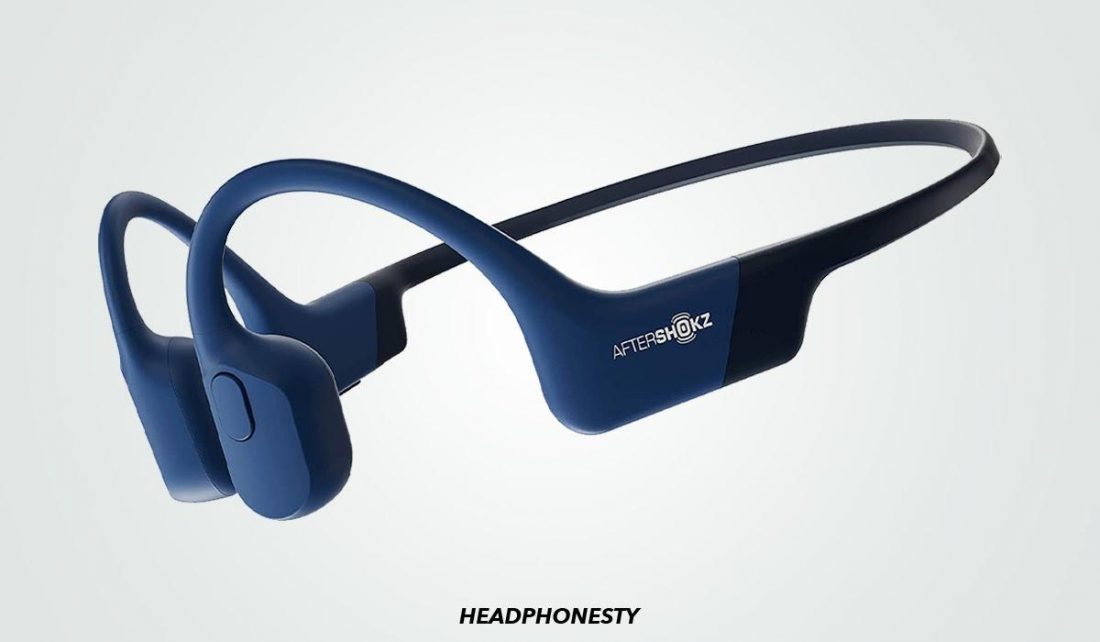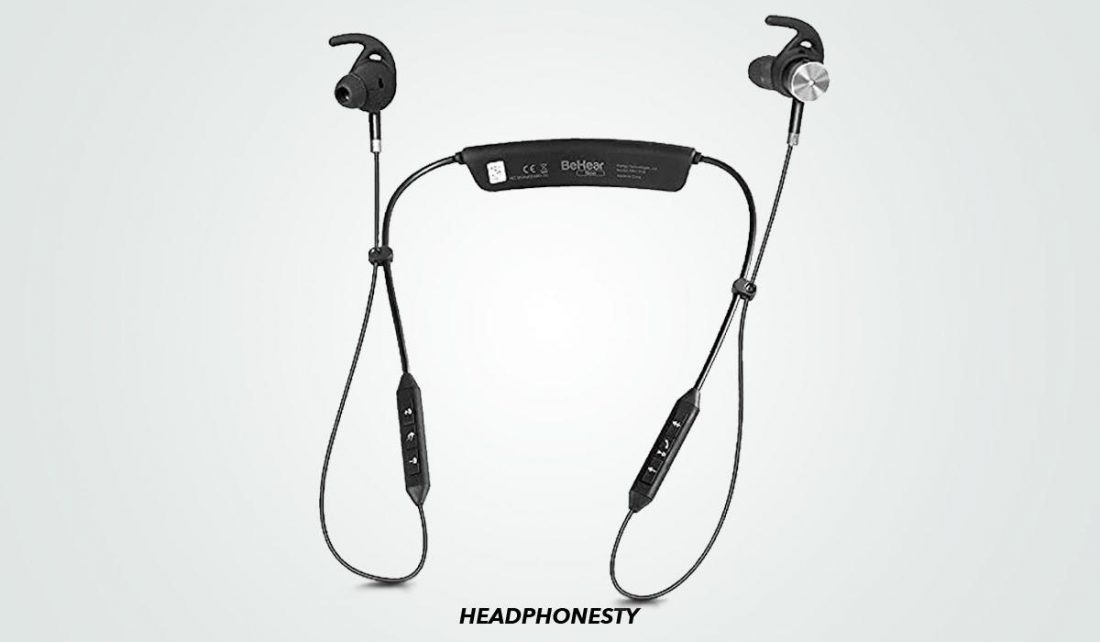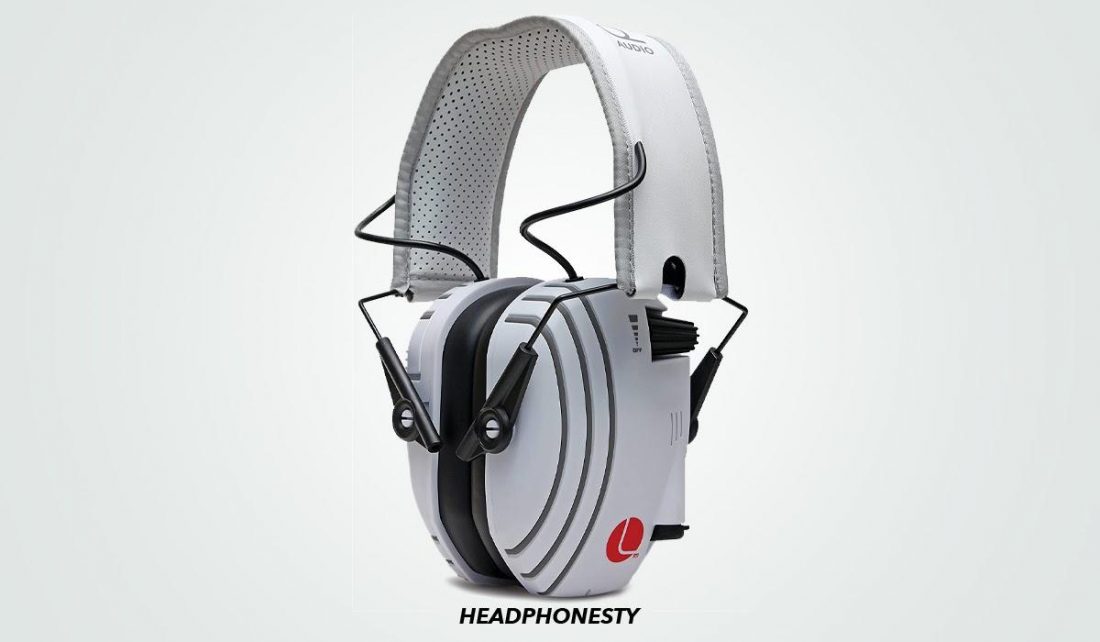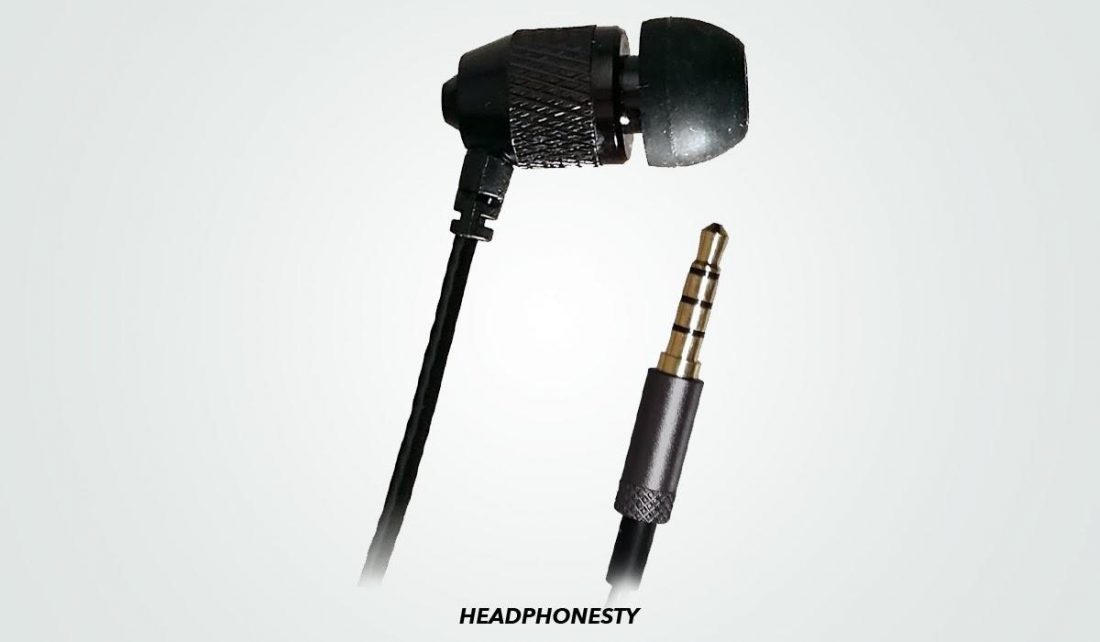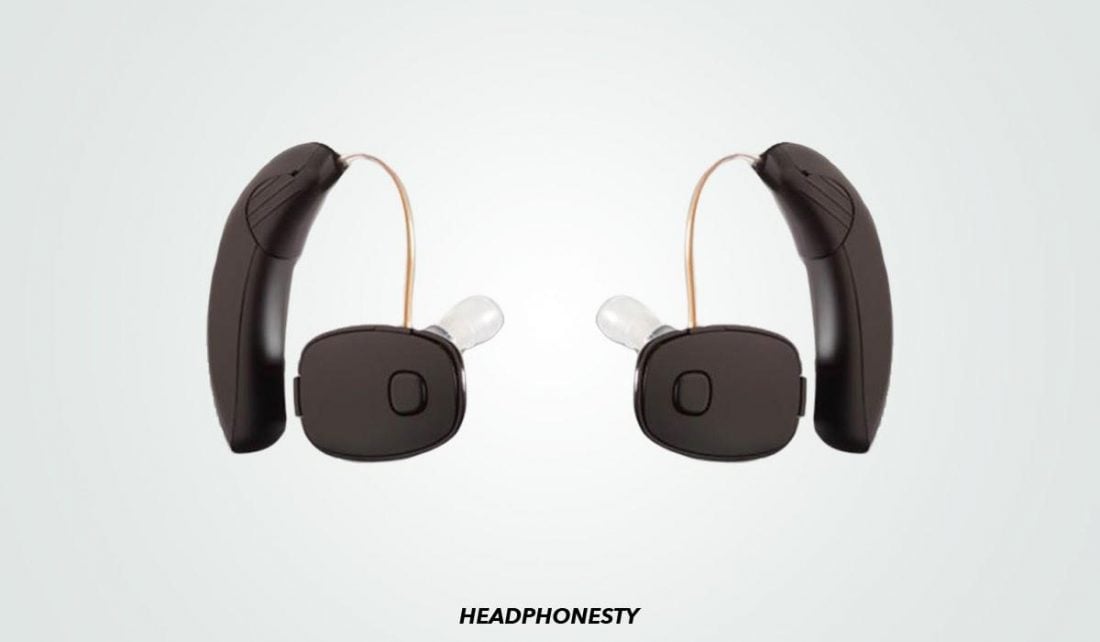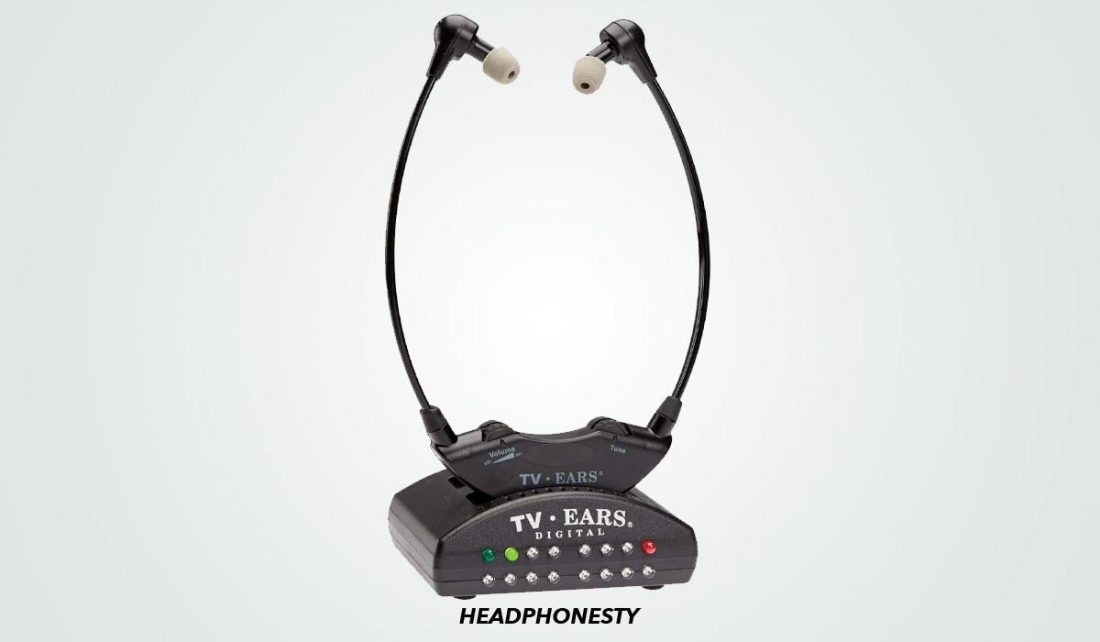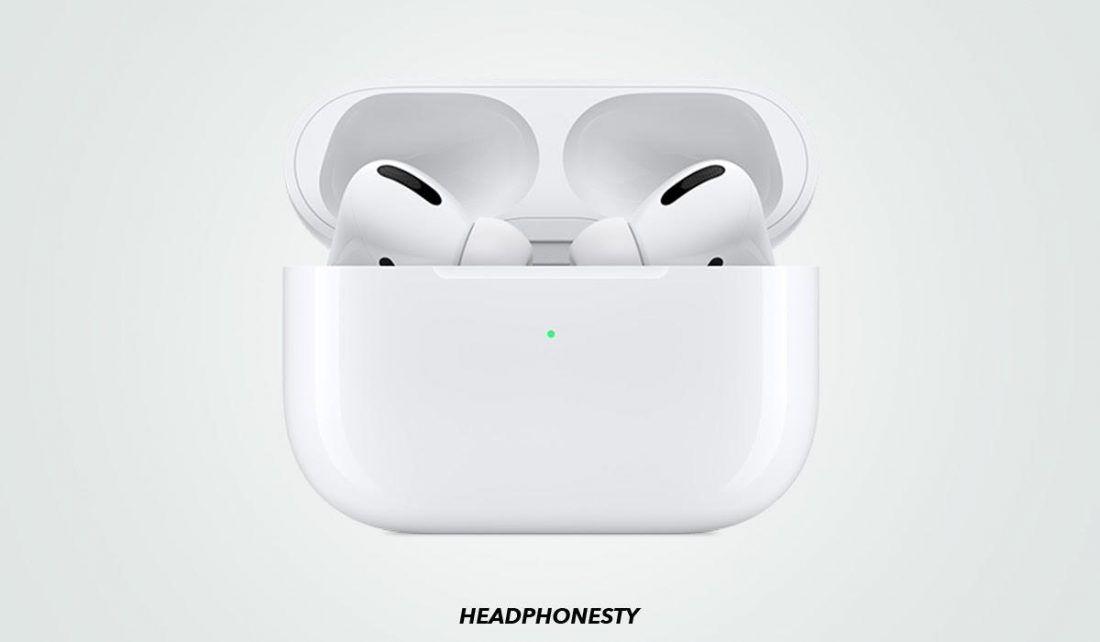How to Pick the Best Headphones for Hearing Impaired
Hearing aids can be very expensive, and for many, they’re just not financially accessible. In contrast, headphones are noticeably cheaper. The great news is, some headphone models include features that are specifically designed to aid with hearing loss. That’s why headphones may not be the first thing you think of when talking about hearing assistive devices but they’re actually more commonly used than you might think. Plus, they can be great options if you just can’t invest in a proper hearing aid, yet, or if you need headphones that are compatible with your hearing aid. However, choosing the best headphones can be challenging if you don’t know what to look for. Not all hearing loss is the same, so headphones that can work with someone else may not work for you. If you’re not sure what qualities to look for, there’s a good chance you’ll be disappointed. To help you with that, here are the factors we’ve considered when compiling this list for the best headphones for the hearing impaired:
AfterShokz Aeropex
Key features
Type: Bone conduction headphones Connectivity: Bluetooth Battery life: 8 hours Additional features: Hearing aid compatible, water-resistant
The Aeropex headphones by AfterShokz are our top pick for people who are hearing impaired, especially those with conductive hearing loss. Thanks to its bone-conduction technology, the sound is transmitted using your bone structure, bypassing the ear canal and eardrum. That’s why you should understand your type before buying a pair of headphones. Here are the most common types of hearing loss:
Conductive hearing loss – Conductive hearing loss is when sounds struggle to get through the outer and middle parts of your ear. It can be difficult to hear soft sounds, and loud sounds may sound muffled. Sensorineural hearing loss (SNHL) – SNHL happens as a result of inner ear damage or as a byproduct of damaged nerve pathways between your inner ear and brain. Similar to conductive hearing loss, soft sounds may be difficult to hear, and loud sounds may sound unclear or muffled. Mixed hearing loss – Mixed hearing loss is a combination of conductive hearing loss and SNHL. This can occur if the outer or middle ear and the inner ear are damaged at the same time.
In addition to the type of hearing loss you have, you also need to understand how severe it is. A hearing test with an audiologist will determine how loud the sounds need to be in order for you to hear them. Here are the different degrees of hearing loss. For this, we used decibels (dB) to describe loudness in relation to hearing loss to classify the severity of your condition.
Normal: -10 to 15 dB HL Slight: 16 to 25 dB HL Mild: 26 to 40 dB HL Moderate: 41 to 55 dB HL Moderately severe: 56 to 70 dB HL Severe: 71 to 90 dB HL Profound: 91+ dB HL
Hearing aid – An FDA-approved Class 1 medical device that’s fine-tuned to the person’s hearing loss. They contain chips that process millions of calculations every second and analyze the environment in real-time to deliver sound that’s tailored to their hearing loss. They’re expensive due to the technology used, often costing thousands of dollars. PSAP – A PSAP is an over-the-counter product that can be used by anyone. It has many uses, and is commonly used by hunters when listening for prey, or lecture attendees who may struggle to hear the speaker. Its function is to simply amplify all sounds so that they’re easier to hear. PSAPs are a lot more affordable, with some models starting as low as $15.
Each type of hearing loss is different. That’s why, when diagnosed, each hearing aid is different and tailored specifically for each individual. But, because hearing aids are expensive, a lot of people choose PSAPs over Hearing aids. While PSAPs should never be considered a replacement for Hearing aids, they can still help you hear your surroundings better.
Headphones with a sound amplifier (PSAP) – Regular headphones may not work for you if you suffer from hearing loss. That’s why some headphones come with built-in PSAPs which are designed to amplify the audio, and your surroundings, to comfortable listening levels for you. Stereo-to-mono earbud – If your hearing loss is isolated to one ear, it can be annoying when listening to songs that split the audio between both sides. To fix this, it’s best to listen to music in mono. When doing so, you receive the full audio signal in just one speaker. This used to require an adapter, but now, you can find headphones that automatically convert stereo sounds to mono for you. Headphones with adjustable sound profiles – Some headphones come with preset sound profiles while others take it further by allowing full personalization. These allow you to control how your headphones sound based on your preference and hearing profile. They work well for mild or unbalanced hearing loss. Bone conduction headphones – With this type, the sound is delivered through the vibration of your bone structure rather than traditional speakers. Those with conductive hearing loss will benefit the most from these headphones.
Most of the time, this can be fixed by adjusting the left and right sound balance from within the device or app settings. But, some headphones take it further by using technology that can determine the best way to deliver sound. For example, Nuraphone does this by using ultra-sensitive microphones that measure how your ear reacts to different sounds that are played. These measurements are used to create a hearing profile that’s unique to you. From then on, any music played will be catered to your specific hearing condition so that you receive the best possible audio. Headphones with PSAP can reach alarming volume levels easily as they’re designed to amplify sound, some reaching levels as high as 120dB. Additionally, smartphones often include a feature that warns you when you’ve reached dangerous listening levels. So you may want to stop ignoring that. There are two types of noise cancellation:
Passive noise cancellation – This refers to the headphones’ ability to block out external noise based on the physical design and materials used. This often serves to prevent sound bleed from leaking out of our headphones, too. Active noise cancellation (ANC) – Through the use of miniature microphones, external noise is processed and an opposing soundwave is produced to cancel out the noise.
Sound-amplifying headphones almost always come with ANC. This is because the same microphones they use to cancel out noise are used to amplify them. You’ll often be wearing your headphones longer than most, especially if you rely on them to help hear your surroundings. Wearing headphones made from poor quality materials that don’t conform to your head shape can cause discomfort, forcing you to take regular breaks, and miss important sounds. There are lots of factors that go into making a comfortable pair of headphones. Here are some things you should keep an eye on:
Extendable ear cups – When it comes to headphones, one size doesn’t fit all. Having ear cups that can extend allows you to customize the fit to your liking so they’re not too tight or too loose. Cushioning – Headphones feature padding in the ear cups, and sometimes on the headband. The type and thickness of cushioning used go a long way in determining how well they’ll feel, as well as the material used to house the foam. Weight – Bigger isn’t always better. Sometimes it’s just heavier. If you’re often on the go, you’d probably prefer a lightweight pair of headphones to keep with you throughout the day. Otherwise, if you’re regularly tethered to your desk, you may not be bothered by how much your headphones weigh.
Charging time goes hand-in-hand with battery life. What good is having a pair of headphones that last up to 20 hours if they take too long to charge? The average pair of headphones can charge fully in 1 to 2 hours. Think about your lifestyle and when you plan to use and charge the headphones so you’re not inconvenienced. This can also serve as a hearing amplifier through a hearing aid app like Petralex. With this, the Aeropex’s microphone can be used to actively transmit the sounds from your surroundings through the headphones. Plus, their design makes them compatible with behind-the-ear (BTE) hearing aids so you can use the two in conjunction with each other. Their ergonomic design places them just resting over the top of your ear. They’re lightweight, and since nothing is crowding your ear, you’ll hardly notice you’re wearing them. With a clean and simple design, they’re suitable to wear in the office and the gym. Though, since they’re not adjustable, they can be too tight or too loose to some people, causing discomfort. All in all, the AfterShokz AeroPex headphones are your best option if you have conductive hearing loss thanks to their patented bone conduction technology. They’re definitely a step up from the previous Air’s, and controlling them is made easy using the multifunction on-ear button. CHECK LATEST PRICE ON AMAZON
BeHear NOW
Key features
Type: In-ear with neckband Connectivity: Bluetooth Battery life: 12 hours Max gain: 42dB Max output volume: 116dB Additional features: Automatic personalized tuning, EasyListen technology
The BeHear NOW’s work as a PSAP in addition to regular wireless headphones. Sporting an incredible max gain of 42dB and personalized tuning, these headphones are great for accommodating mild-to-moderate hearing loss. With these earbuds, you can use the hearing assessment tool included with the free W&H BeHear app on Apple or Android to determine your unique hearing profile. Otherwise, use the hearing mode presets to manually adjust the audio based on your environment, with a choice between Indoor, Outdoor, Crowd, and Live Music modes. Even though your hearing loss is unique, the app gives you full control to customize your audio to your needs on the go. You can also use the EasyListen feature to slow down incoming speech during phone calls so you’re not missing out on important conversations. Phone calls can also be amplified to make hearing the other person even easier. All this happens while the headphones are reducing any distracting background noise to make sure your conversations, whether on the call or not, are clear as day. BeHear NOW doesn’t stop there, though. It also has a ListenThrough feature that allows you to hear the environment around you in addition to music so you can stay aware of your surroundings. And, these headphones feature the highest gain in the list, allowing you to amplify important ambient sound to audible levels. CHECK LATEST PRICE ON AMAZON
Lucid Audio AMPED Headphones
Key features
Type: Over-ear Connectivity: Wired (detachable cord) Max gain: 21 dB Max output volume: 110 dB Additional features: Individual volume controls, active noise protection (NRR)
The AMPED headphones by Lucid Audio are the most affordable on the list. Featuring a clean white aesthetic, these headphones work great as a hearing assistive device, offering up to 9x sound amplification. These headphones include an NRR of 21dB, which means they actively protect your hearing by instantly reducing noises that reach alarming levels. Control the volume of music, movies, games, and outside noises individually using the patent-pending AMPED technology. But since they need the cable to connect with your audio source, this does mean that you will be tethered to whatever device you’re using. It also requires two AAA batteries for the noise cancellation and sound amplification features to work. Having an internal rechargeable battery would have been ideal, but this is understandable since it’s the cheapest headset on this list. Moreover, the headphones, although they provide a secure fit, can be very tight for some seeing as they’re not easily adjustable. And, because of their size, they are quite heavy. Definitely two things to consider if you’re regularly on the move. The headset looks great, and the included hearing protection features make them a great option for those who are concerned about exposure to loud noises. But since they are quite bulky, these are recommended more for those who don’t mind the extra weight. CHECK LATEST PRICE ON AMAZON
XDU Pathfinder
Key features
Type: Since in-ear Connectivity: Wired Additional features: Stereo-to-Mono conversion
The XDU Pathfinder single in-ear headphone is designed to deliver converted stereo-to-mono audio through a durable nylon-reinforced TPU cable, allowing you to hear everything through the one driver. So, if you’re deaf in one ear, or if you only have hearing problems in one ear, these headphones will work great as they automatically convert all audio to mono. You can wear this earbud in either the left or right ear. And, you can customize the fit by easily replacing the soft rubber ear tip with one of the different size options for increased comfort. It works with any device that uses a 1/8 inch or 35mm plug. The long 42-inch cable may be welcomed for those using them with devices they need to sit away from, but for everyday use, managing the cable can be quite a hassle. This becomes worse due to the kinks in the cable caused by the way the cord is packaged. CHECK LATEST PRICE ON AMAZON
Nuraphone
Key features
Type: Over-ear, in-ear Connectivity: 3.5mm wire or Bluetooth Battery life: Up to 20 hours Max output volume: 120 dB Additional features: Automatic personalized tuning, Active Noise cancellation
Claiming to be the world’s smartest headphones, the Nuraphone headphones are rich with features. When paired with the free Nura app on Apple or Android, the headphones will automatically create a hearing profile that’s tailored to your hearing loss in only 60 seconds. These aren’t your typical headphones. Their unique design makes use of both in-ear and over-ear form factors, providing double noise isolation. Add the included active noise cancellation to that, and you can remain completely immersed in whatever you are listening to. If you wish the opposite, the Nuraphone’s Social Mode allows you to hear the world around you at the touch of a button. Using the on-ear touch buttons, you also have full control over your music at all times. Plus, you can use these for up to 20 hours on a single charge, making them great for all-day activities. Despite the foam ear pads, these headphones become very uncomfortable when worn for an hour or longer. This is caused by the unique in-ear and over-ear combo design. While the design does have its noise isolating benefits, comfort is a huge factor for most and this will be the biggest drawback. The Nuraphone headphones definitely do their best to stand out from the rest, and it shows through their advanced personalized tuning and ambitious hybrid form factor. But we suggest checking them out at a local retailer so you can get a feel for the fit before you make any decisions. CHECK LATEST PRICE ON AMAZON
Sound World Solutions CS50+
Key features
Type: True wireless in-ear with ear-hook Connectivity: Bluetooth Battery life: 15 hours Max gain: 25 dB Max output volume: 112dB Additional features: Frequency adjustment
The CS50+ PSAP features precise customization within the CS Customizer app, allowing you to control what frequencies are focused on. If you want to focus on voices, you can increase the mid-high frequencies. This helps reduce feedback and improve clarity, relying less on presets to find the perfect balance. You can adjust the fit with one of the three different ear tips for maximum comfort. And, switch between the three built-in amplification presets for easy adjustment. The earpieces can last up to 15 hours before needing a charge, more than enough to get through a regular workday. However, the build quality isn’t as sturdy as others on this list. If you drop them, there’s a chance that the plastic casing will split open. If these are going to be worn daily, you will need to be careful when wearing them. There’s no doubt that the CS50+ is a feature-rich PSAP that allows you to customize the experience to your condition and environment. While the physical design could be improved for better protection, it’s still a low-profile and powerful assistive listening device. .CHECK LATEST PRICE ON AMAZON
TV Ears Digital Wireless Headset System
Key features
Type: In-ear Connectivity: IF & Analog & digital TV connection Battery life: 4-6 hours Max output volume: 120 dB Additional features: Proprietary Voice Clarifying Circuitry
The TV Ears Digital Wireless Headset System is a device that’s specially designed for watching television. The proprietary Voice Clarifying Circuitry works to increase the clarity of voices on the TV while decreasing the volume of background noises. Even whispers are easily heard. Compared to their previous version, the TV Ears Original that only supports analog signals, the TV Ears Digital natively supports both digital and analog televisions. Aside from that, the only other difference is the increase from 6 sound-emitting diodes to 13 on the new TV Ears Digital. Overall, it’s a very unique product that’s tailored towards those who want to watch TV with everyone else without raising the volume to alarming levels. Setting it up can be quite technical, but once it’s in, the headset itself is very easy to use and charge. .CHECK LATEST PRICE ON AMAZON
AirPods Pro
Key features
Type: True wireless in-ear Connectivity: Bluetooth Battery life: 4.5 hours Max output volume: 102 dB Additional features: Active Noise Cancellation, Transparency Mode, Live Listen, Customizable Hearing Profiles
Apple’s AirPods Pro, one of the world’s most popular true wireless earbuds, makes an appearance on the list thanks to features like transparency mode and the ability to customize the sound based on your hearing profile in the Apple Health app. Thanks to their small form factor and charging case, you can take them with you wherever you go. The AirPods Pro’s have an IP rating of IPX4, making them sweat and water-resistant so you don’t have to fret over them coming into slight contact with water. Transparency mode is used to directly amplify the environment around you without needing to remove the earbuds. On the other hand. AirPods Pro also has a built-in ANC, allowing you to focus on your audio and block out any ambient noise. However, while the noise cancellation is definitely there, it doesn’t seem very effective. Your experience will come down to how well the earbuds fit in your ears. Using tips that provide a tighter fit will increase noise isolation at the cost of comfort. Typically seen as regular earbuds, Apple’s AirPods can be used as an assistive hearing aid for those with mild hearing loss thanks to the convenient size, array of features, and seamless integration with Apple products and software. CHECK LATEST PRICE ON AMAZON
